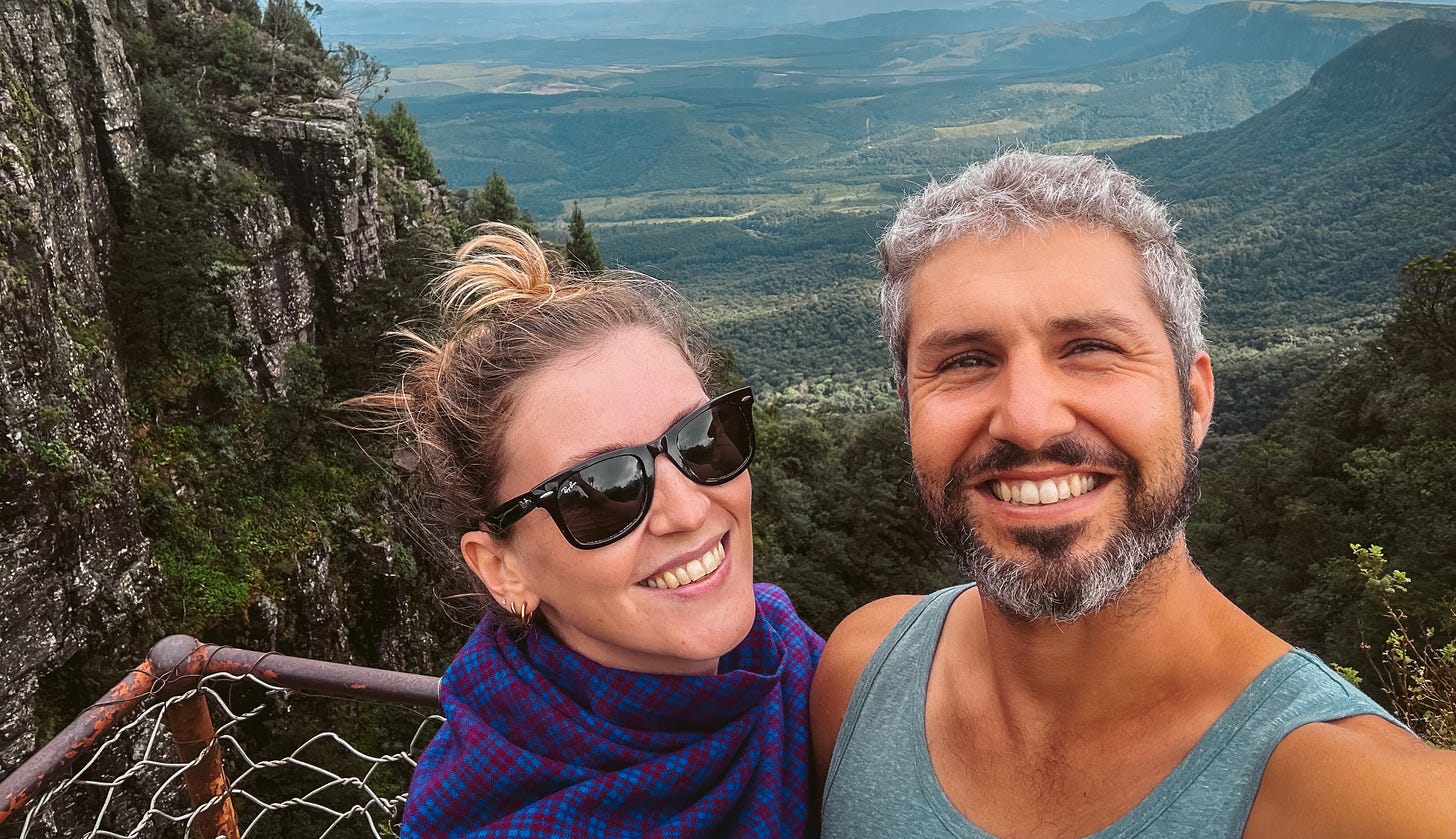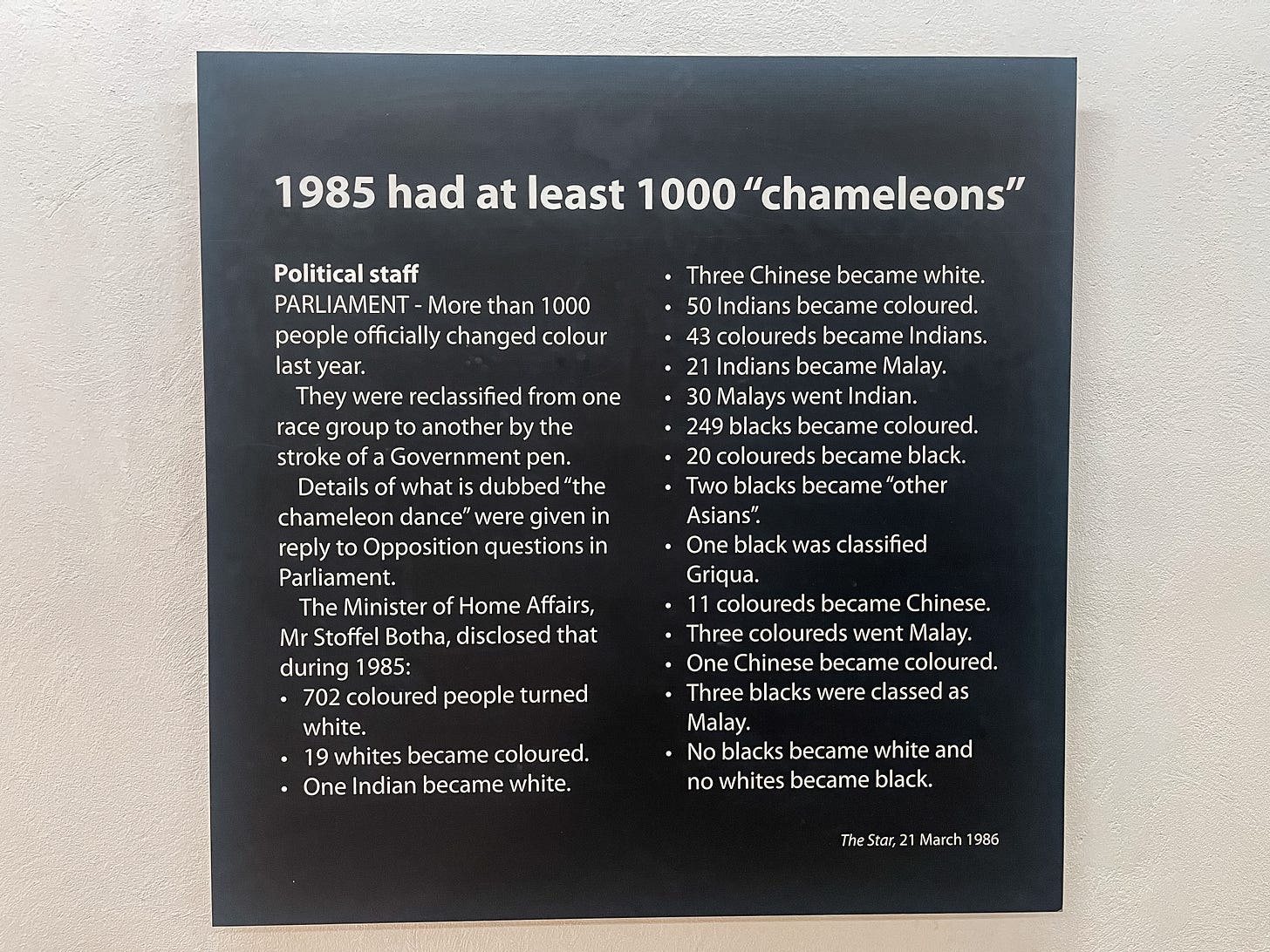While traveling through East Africa we met so many people who told us not to go to South Africa, that it’s is super dangerous, that South Africans are emigrating to other countries, and that the country is going backwards. We spoke to tourists who said they had been attacked or robbed while being there, and even South Africans themselves who spoke so negatively about their own country. Honestly we were almost turned off going there, especially after spending so many months in the safety of East Africa. But luckily we didn’t allow other people’s opinions change our minds and headed into South Africa from Eswatini. While our overall impression of the country is not exactly black or white (pun intended), it is definitely an incredibly beautiful place. And while East Africa definitely presents its issues and challenges, South Africa offers a whole different set of problems… Hello load shedding! More on that later…
We entered South Africa via the mighty Kruger National Park, roughly half the size of Switzerland, spanning 20,000 square kilometres along the Mozambican and Zimbabwean borders. It was in Kruger, driving along the perfectly tarred roads, that we started to realise that the tourist experience in South Africa would be on a whole other level.
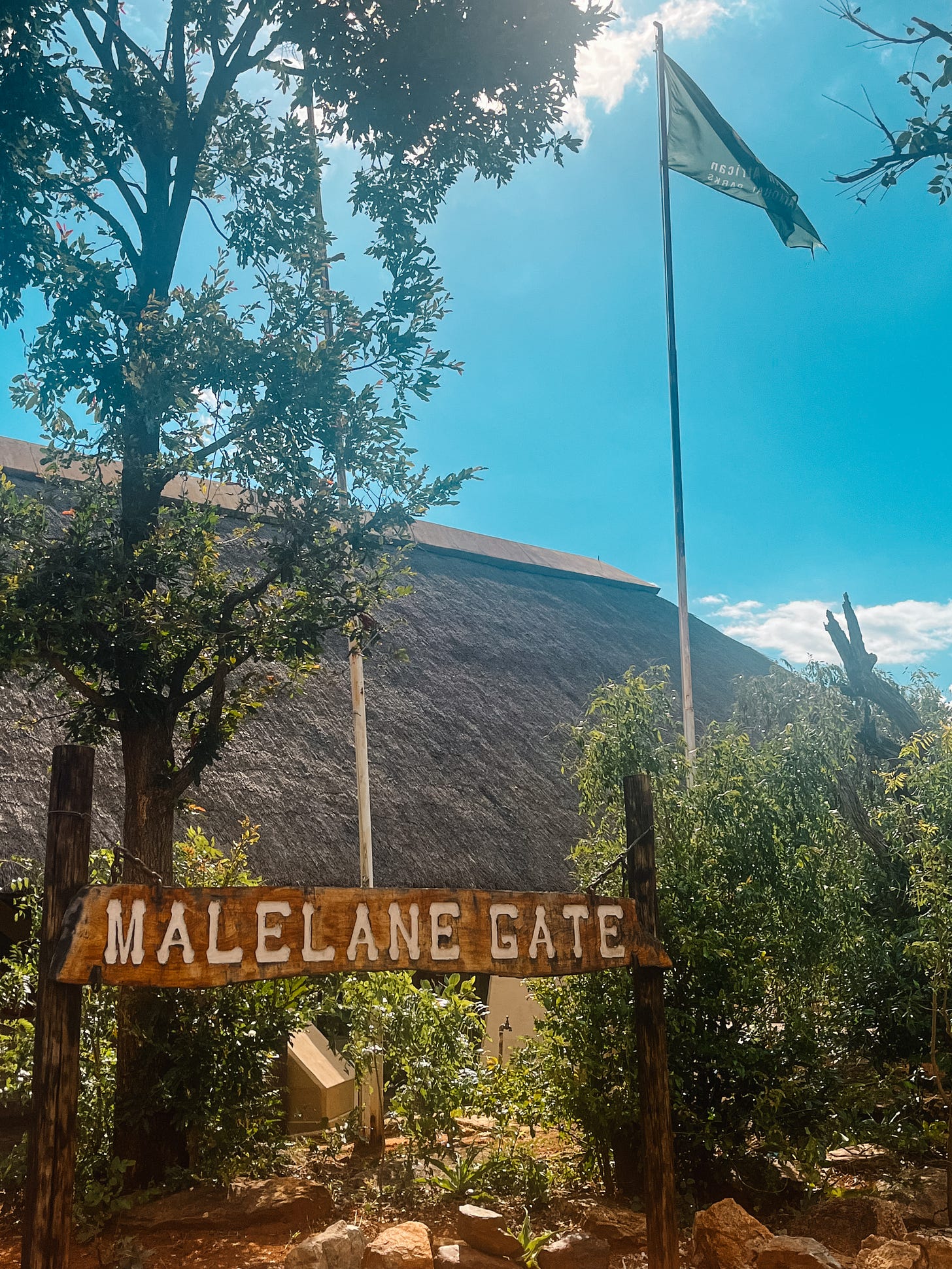
In fact, there are even petrol stations in national parks! It was difficult to spot a lot of animals in Kruger, as it was just after a rainy period and the bushes and grasslands were dense. But even if there were animals to be seen, our Subaru had other plans for us… After a night of camping in the park, we woke up at 5:45AM (Emma had to be dragged out of the tent) to head for a game drive. After hopping into the car we were welcomed with warning symbols on our dashboard that we hadn’t seen in that constellation so far. A quick google search revealed that we more than likely had an almost dead alternator - in fact we were lucky the car even started. Knowing that this could be the case, we immediately started driving towards the next park exit, holding our breaths - it was 1.5h away.
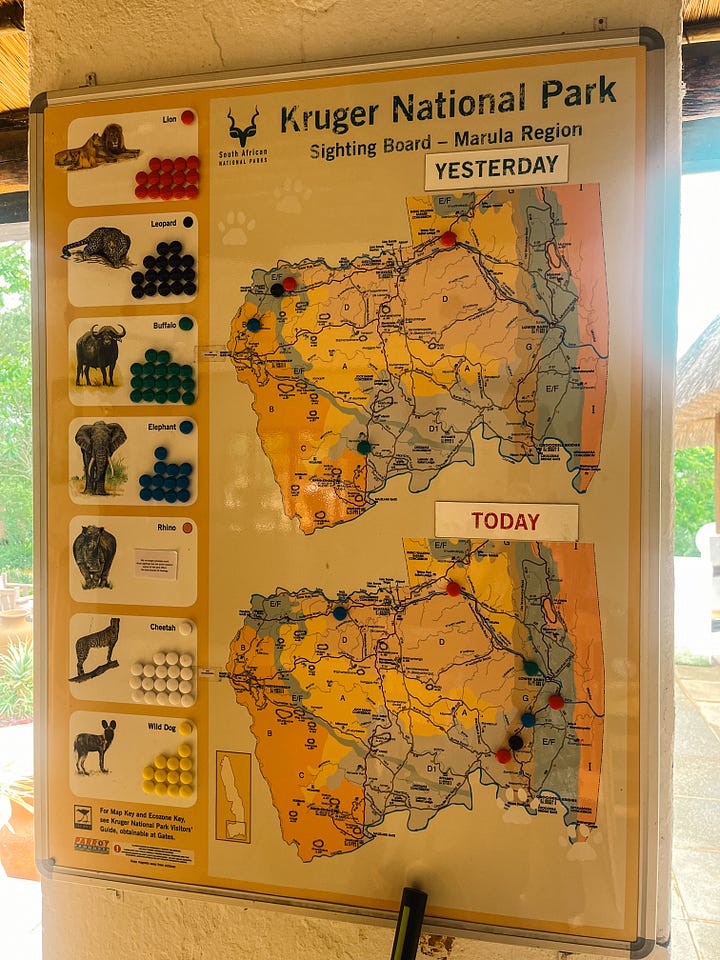
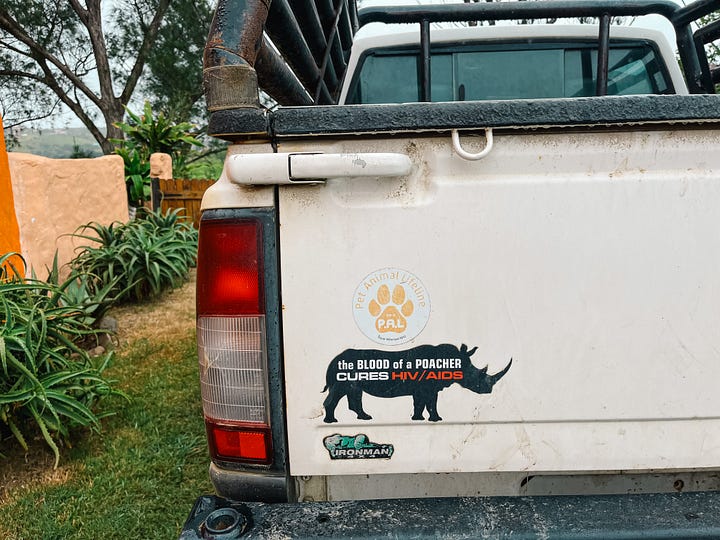
Thanks to the iOverlander app (a reliable source for these kind of situations) we were able to find a “trustworthy” mechanic shop close to the park gates, where we ended up spending many hours over the next two days. While we waited for a new alternator to arrive by courier from Johannesburg (apparently the only alternator in the whole country matching our car), we had plenty of time to chat to the car mechanics. It was then that we realised that indeed the safety concerns in South Africa are very real. Shockingly, everyone at the shop was carrying a gun. They pointed across the street and told us that someone had been shot there as recent as the week before, and that their neighbour’s business had been robbed at gunpoint in recent months. Their stories were crazy! Had we just arrived in America?

Aside from the horror stories we also experienced the extreme friendliness of South Africans. Everybody we met wanted to us to have a great experience in their country. Even a policeman didn’t want to give us a supposedly justified fine because we were tourists and “should have a good time”. The mechanics also introduced us to “biltong”, a cherished culinary tradition in this part of the world, and they insisted on taking us to the best butcher in town to buy some. Biltong is basically marinated strips of dried beef, not too dissimilar to beef jerky (dare I say), but you can also get game meats like kudu, springbok, and ostrich. It’s SO good!
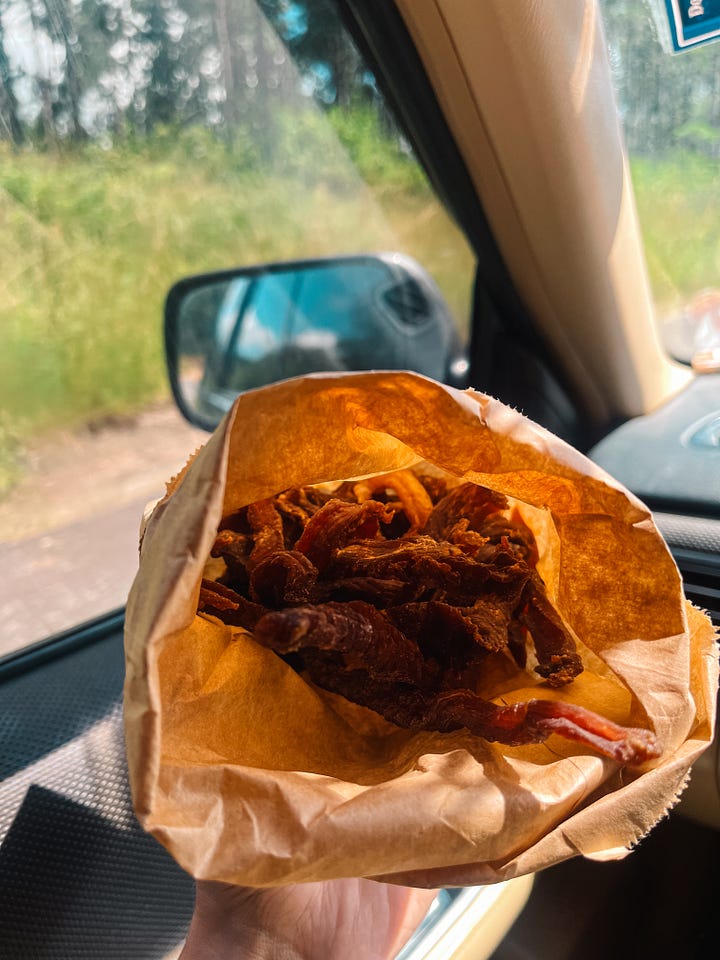
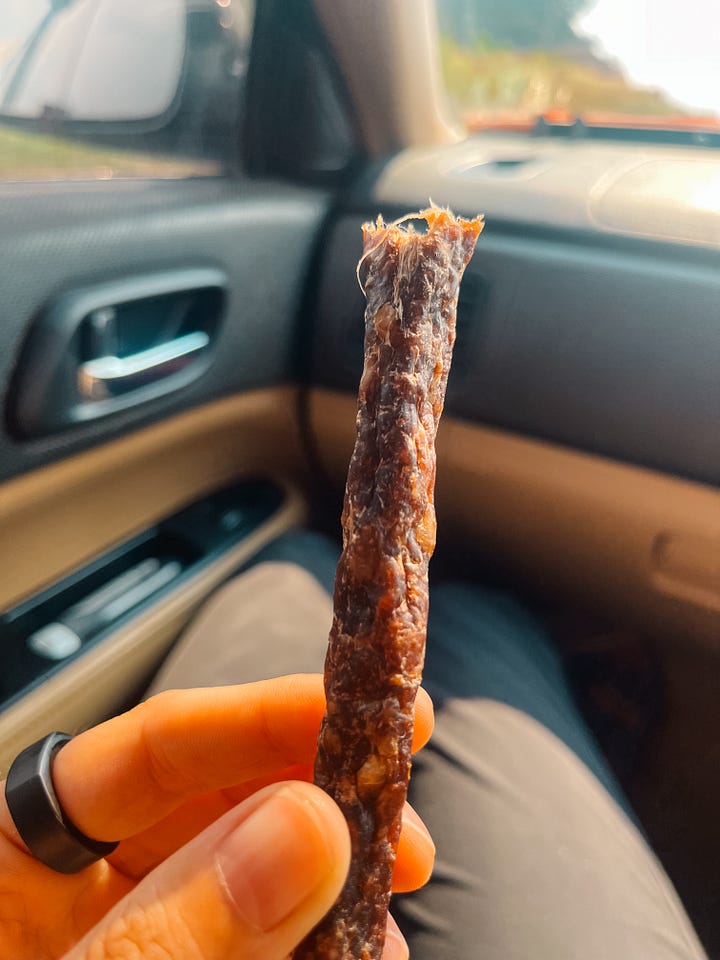
Apart from the Biltong, we were also introduced to impeccably stocked supermarkets, including entire ice-cold rooms for cold beer only. We were quite blown away by the selection of food and drinks, we hadn’t had such variety since we were in Nairobi. We were also blown away by bush babys’ ability to steal and savage a packet of jelly babies within a few minutes. And they’re probably not the only ones smashing through bags of jelly babies… We were shocked at the amount of extremely obese people in South Africa, specifically in the east of the country, and specifically women. We weren’t surprised when we heard that South Africa has one of the highest obesity prevalences in the world, with half of the population (60 million people!) being overweight or obese. Again, had we just arrived in America?

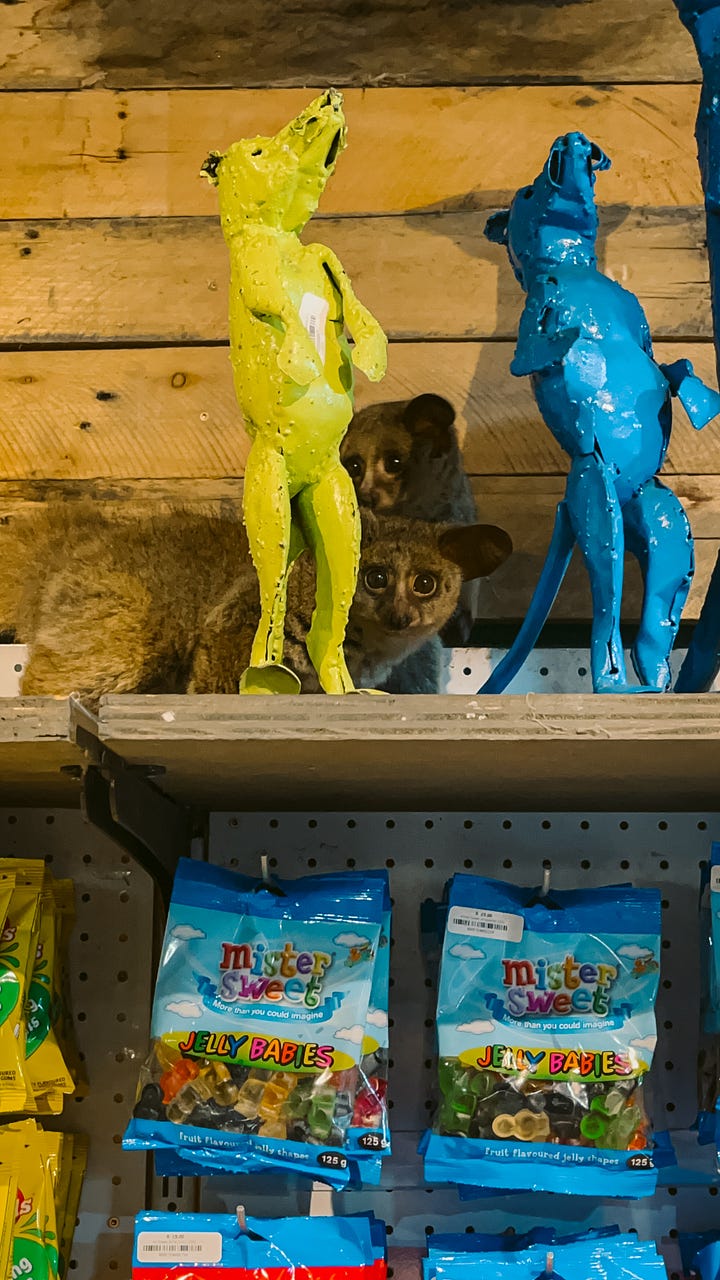
With a new sexy alternator installed, we got back to exploring Kruger Park and the surrounding area, before heading towards Johannesburg. And little did we know how fast our Subaru actually can go. Up until this point our average speed was probably around 60 km/h (except Mozambique, where we moved as slow as a snail due to the extremely bad crater-like roads). On the perfectly tarred and wide South African roads we suddenly were able to go 120 km/h and above, and we were very glad to see that our 21 year old Subaru didn’t fall apart while doing so…

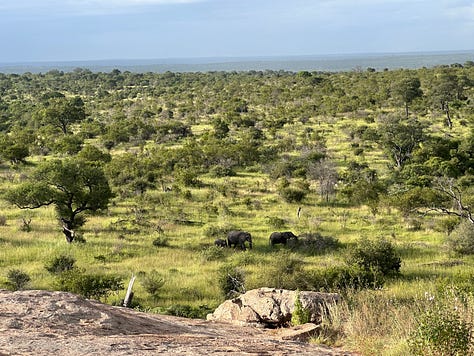
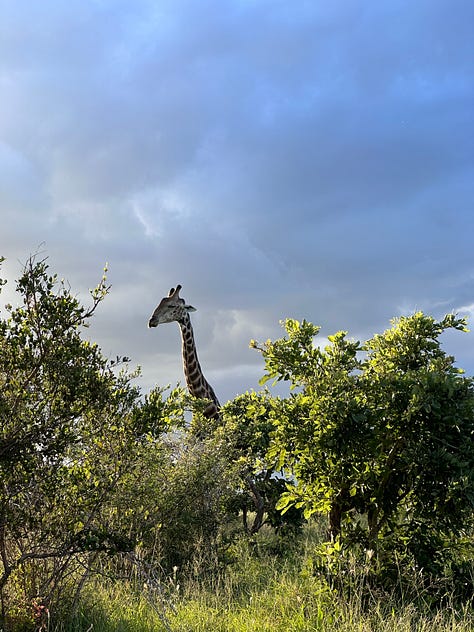
Johannesburg is metropolis of 6.2 million people. It is the business centre of South Africa and is often overlooked by tourists due to one main reason - crime. We were lucky that our dear friends Dani & Dave had recently relocated from Zürich to Johannesburg and they offered to host us for a week. After quite a few humid nights in a tent, we were very happy to have the luxury of a few days in their beautiful house with a swimming pool, where we could relax and spend time with them. And need I mention their glorious washing machine…
Unfortunately Johannesburg has a bad reputation in terms of safety. You’re told not to go there, not to drive on certain roads, not to go to certain areas, watch out when driving under bridges as people throw rocks at cars, don’t stop at traffic lights… the list is endless! While we understand that it’s very different for residents, we realized that tourists only have to follow the usual safety rules that you would follow in any big city, listen to local recommendations, and definitely don’t drive at night - because it’s a shame to miss out on what Johannesburg has to offer!
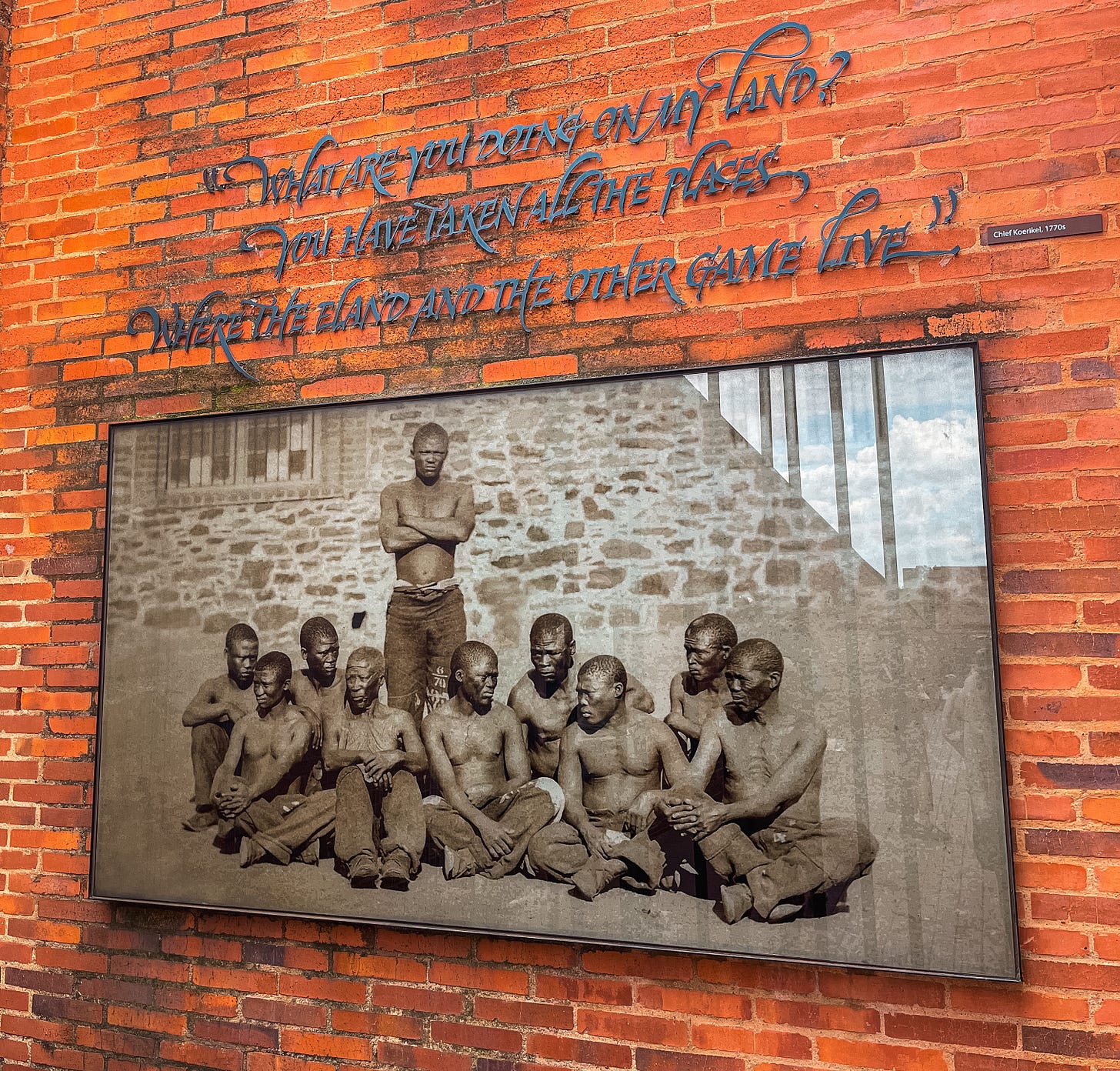
Johannesburg is a good base to learn more about the county’s history, especially at the Apartheid museum. The entrance alone is a wake-up call. On our entrance tickets it stated whether we were white or “other”, which then dictated which entrance we could use - just like how it was during apartheid. The museum is huge and details the years prior to apartheid, the gold rush, the beginning of the system of segregation, and the horrifying acts of discrimination that took place like the identity cards given to blacks and coloureds, the prohibition of “mixed marriages, and the 1913 established “land act”, which prohibited "black" people from buying or renting land in areas designated as "white" (to name but a few). The latter was one of the cornerstones of apartheid and paved the way for further legislation restricting the rights of black people and their ownership of land. In order to fulfil this legislation the government took measures to forcibly remove black people from areas set aside for white people.
Shockingly not much has changed today when it comes to land ownership, even thirty years after the abolishment of apartheid. Whites only make up 7.7% of the population today, yet they own 77% of the land. There are ongoing efforts to return land to the indigenous and address the ongoing unequal distribution of land in the country, but unfortunately it seems that the leading government party since 1994 (African National Congress) is not addressing economic inequality/leftovers of colonialism, and instead perpetuates structural violence. As a result many dangerous rhetorics inciting violence against farmers have increased in recent years, unfortunately too often resulting in murders…
The history is unimaginably tragic. Terrible atrocities were committed against the non-white population and a huge number of laws were installed against them. To give one example, the Native Resettlement Act from 1954 granted powers to the government to remove non-white Africans from any area within and next to the magisterial district of Johannesburg. Photos in the museum showed people leaving their homes with their belongings in a few bags. In essence this Act aimed to effect the removal of Black South Africans from Sophiatown to Soweto, a township in the southwest of Johannesburg, creating the largest Black city in South Africa. Soweto, the home of Trevor Noah, came to the world’s attention in 1976 when mass protests erupted over the government’s education policies. The impact of 23 people dying during those protests, due to police brutality of course, led to cultural and economic sanctions from abroad - Soweto became the poster child of violent state repression.

It is a miracle that Nelson Mandela and his wife Winnie achieved the impossible. The reconciliation of a very divided country, with unimaginable separation and suppression that resulted in a lot of hatred. While we were in Soweto we visited Mandela’s house, where he lived for the most part of his live (whenever he was not in prison). Vilakazi street, where the house is situated, is also where Desmond Tutu lived - two Nobel prize winners from the same street.
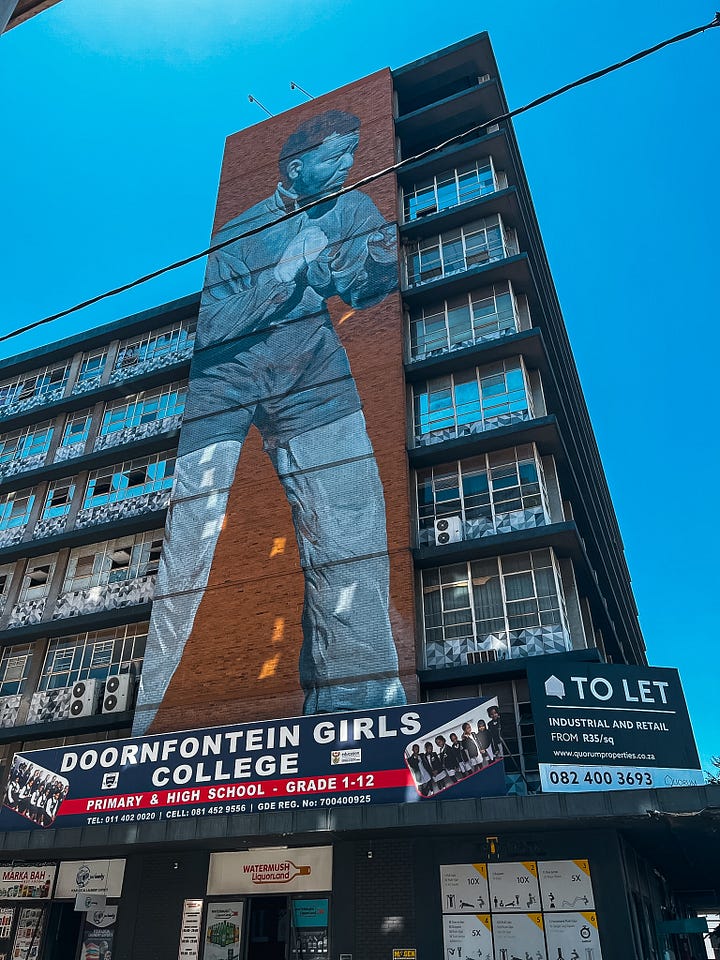

Even though whites and non-whites live peacefully next to each other today, the separation and wealth disparity is still omnipresent. When driving through South Africa, you will come across many townships, which historically refer to “underdeveloped racially segregated urban areas that, from the late 19th century until the end of apartheid, were reserved for the non-whites”. This is still the case today. You will see some very densely populated township areas with very basic housing structures next to perfectly maintained neighbourhoods with lots of green space and perfectly maintained gardens. It goes without saying that this stark inequality creates a lot of tension, which is why most of the white neighbourhoods are fenced off and patrolled for 24h. Private security services are a lucrative business. South Africa has over 10,380 registered security companies, predominantly contracted to ensure the safety of the white neighbourhoods. But not only; when we were walking around Soweto I noticed a casually clothed guy standing at a crossroads with a big fully automatic machine gun around his neck. It turns out he was hired by the bus companies to ensure the safety of the neighbourhood and their passengers. If the safety cannot be ensured by the police, the local communities have to take their own (sometimes drastic) measures.
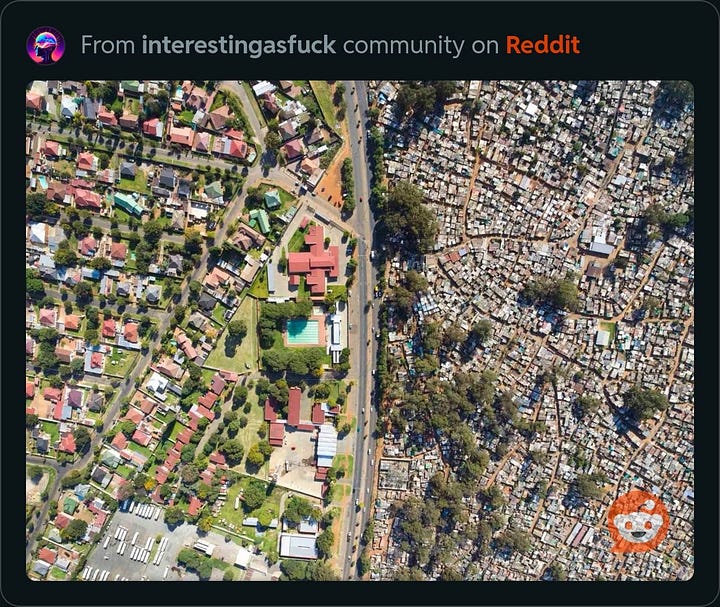

We hope that with the upcoming elections in August that there will be change for the better. From discussions with many locals we learned that most people are very unhappy with how the ANC (African National Congress), who have been in power since Mandela’s release in 1994, is running the country. As outsiders, we both agree that something feels very off in South Africa. And we’re still unsure as to what ingredients make the perfect rainbow…
Thank you for reading our postcard from South Africa, there is more to come very soon…
Don’t forget to subscribe if you haven’t already!





